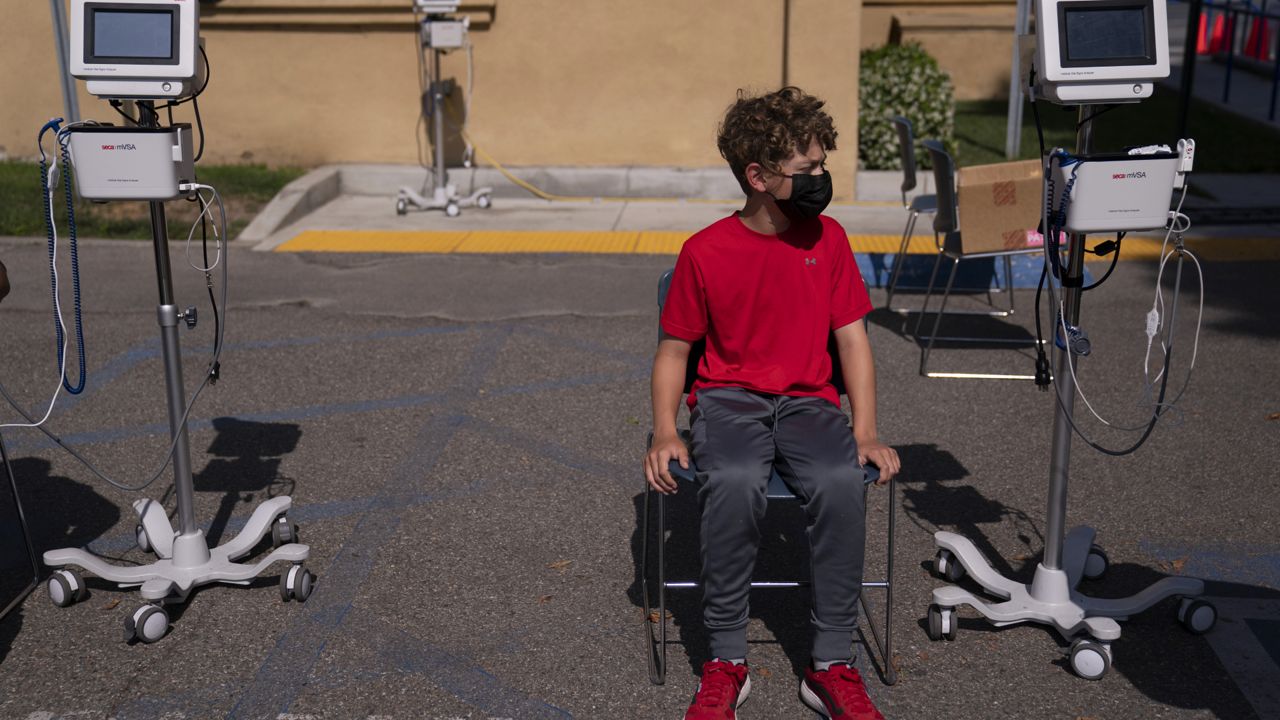SANTA ANA, Calif. (CNS) — Orange County's encouraging COVID-19 trends continue, with just 19 new infections reported Monday and the number of patients in intensive care dropping below 10.
Monday's new cases boosted the county's cumulative total to 255,473.
Hospitalizations ticked up from 61 Sunday to 64 Monday, but the number of intensive care unit patients dropped from 10 to 8.
The county's COVID-19 statistics have been "ticking up or down one-tenth of a point day to day so there are no significant changes," Orange County CEO Frank Kim told City News Service.
The county expects to remain in the least-restrictive yellow tier when the state releases its weekly averages on Tuesday, Kim said.
"It seems like we've hit a new plateau," Kim said. "Which is good because it's a low plateau."
When considering all residents eligible for inoculation "we're in the 65% range," of those who have received at least one dose of vaccine, Kim said. "We're getting close to 70% of those eligible having at least one shot in the arm."
The county is now focusing on mobile vaccination sites, Kim said.
"We had 22 mobile PODs last week," Kim added.
At one shopping center in Irvine, the county had 200 appointments booked, but 160 showed up, Kim said. Another 80, however, signed up without an appointment and were inoculated, Kim said.
"So we did about 240 that day," he said.
There were no fatalities logged on Monday. The death toll stands at 5,083. There were 10 deaths logged this past weekend, but half of them occurred in February, three happened last month and one occurred on Friday, marking the first time a fatality happened this month.
The death toll for May stands at 13; 41 for April; 185 in March; 588 in February; and 1,549 for January, the deadliest month during the pandemic; and 959 for December, the next deadliest.
Another 5,116 COVID-19 tests were reported, bringing the county's total to 3,972,807.
The county's weekly average of tests per 100,000 is 233.1.
According to weekly state data released every Tuesday, the average for the county's daily case rate per 100,000 residents dropped from 1.3 to 0.9. The overall test positivity rate improved from 0.8% to 0.6%, and the county's Health Equity Quartile rate, which measures positivity in hot spots in disadvantaged communities, remained at 0.7%.
Those numbers guaranteed the county to remain in the least-restrictive yellow tier, and — regardless — the state is getting ready to scrap its tier system for reopening the economy on June 15.
"We're excited about June 15 and what it means technically, but until (Gov. Gavin Newsom) makes that announcement, we don't know what the caveats will be," Bartlett said.
Meanwhile, the board of the California Occupational Safety and Health Administration, or Cal-OSHA, voted Thursday night to revise state rules as of June 15 — allowing employees to shed masks in the workplace, but only if everyone in the room is fully vaccinated against COVID-19. The board said the move was a stopgap while it considers further easing of rules in the coming weeks and months.
Andrew Noymer, a UC Irvine professor of population health and disease prevention, said he agreed with the policy.
"What they're trying to do is dangle a huge carrot in terms of vaccination and that carrot is that you can take off your mask at work if everyone in the office is vaccinated," Noymer told City News Service on Friday.
"But my point is, it's going to make very little difference during the summertime whether people follow these rules or not," Noymer said.
Noymer predicted the summer months will be mild in terms of coronavirus transmission, but the infections will pick up in the fall when temperatures drop, forcing people into more indoor activity and students return to school.
When the state drops its tiered system of restrictions in mid-June a lot of residents may not notice much difference when it comes to face coverings, Noymer said.
"When the governor gets in front of the television cameras and says no more masking June 15, he means private individuals when they're going about their own business, but in the workplace, they're still governed by workplace rules," Noymer said.
Retail businesses will likely continue requiring face coverings because it will be difficult to determine if everyone is vaccinated, Noymer said. Private businesses can enforce mask rules if they want to, he added.
"No shirt, no shoes, no service," he said. " I don't think there's a California statute that says you have to wear a shirt if you go to McDonald's, but it's McDonald's policy. I think the businesses will reserve the right to do that as well."
He added, "I basically think it's good policy. I think Cal OSHA is trying to keep California workers safe. ... It's a little conservative in terms of masking, but it's also dangling a huge carrot in terms of vaccination."
Meanwhile, Noymer said the latest statistics in the county are "excellent."
Orange County CEO Frank Kim said last week that the numbers "are looking pretty good."
County officials have seen an overall decline in demand for vaccinations, but, on the other hand, they are having success reaching many residents with mobile vaccination centers, particularly with the one in Santa Ana serving clients of CalOptima, the county's insurance for low-income residents, Kim said.
"They were doing over 1,000 (vaccinations) a day," Kim said of mobile vaccine points of distribution.
Orange County officially entered the least-restrictive yellow tier of the reopening blueprint on May 19, which allowed for greater attendance for many businesses such as movie theaters and gyms, while museums, zoos and aquariums were allowed to open at full capacity. For the first time, bars and distilleries were able to open indoors, and theme parks such as Disneyland could expand attendance.



